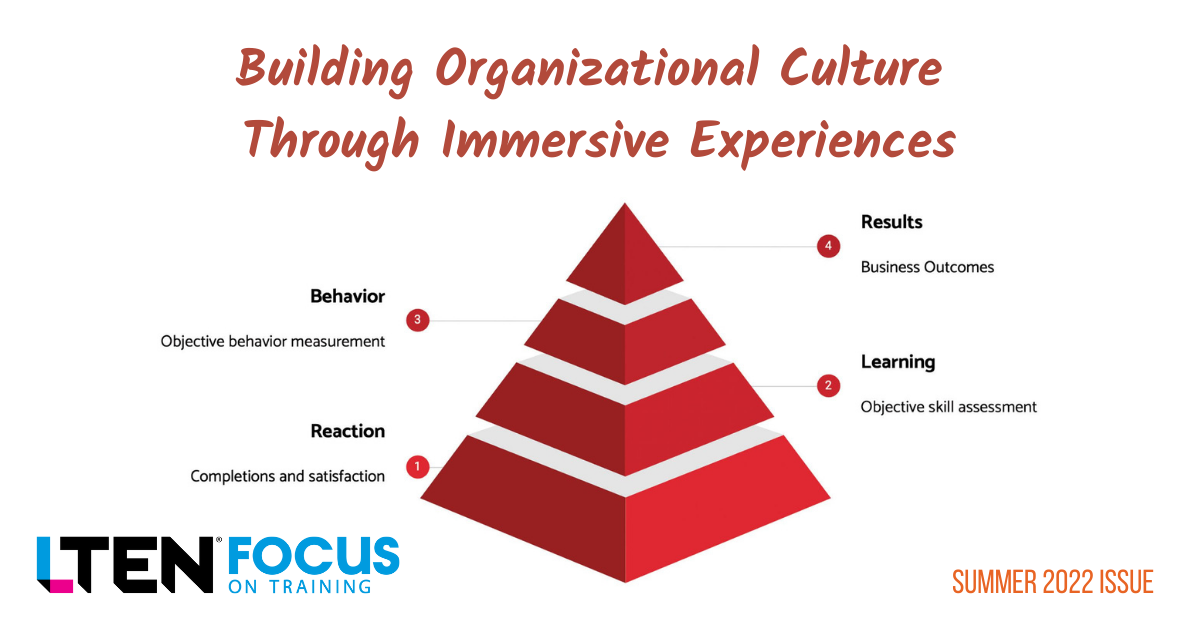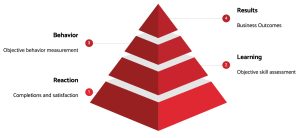
Feature Story- By Sowmya Sudhindranath
Effective leaders know it’s paramount to ensure employees are engaged
One of the greatest ongoing challenges the pandemic-related fallout has created for life sciences businesses in 2022 relates to building and maintaining an organizational culture. Employees need to feel that they are a valued part of the organization and be confident about opportunities for collaboration – knowing there is accountability from C-suite leaders – from the top all the way down to newly onboarded workers.
 Organizational culture in years past relied on in-person opportunities. Employees would gather in person onsite and offsite for team meetings, retreats, team-building exercises and scheduled learning & development (L&D) activities where regional or field-based teams were brought into headquarters or a hotel.
Organizational culture in years past relied on in-person opportunities. Employees would gather in person onsite and offsite for team meetings, retreats, team-building exercises and scheduled learning & development (L&D) activities where regional or field-based teams were brought into headquarters or a hotel.
The shift to fewer in-person meetings led to corporate learning having a greater role in organizational success strategies. Life sciences L&D, HR and talent management departments are more strategic in their talent development efforts, tackling the need to upskill and reskill their remaining employees post “greatresignation” by exploring various elearning and immersive learning platforms that can be easily scaled to thousands of employees.
While some all-hands meetings are now being scheduled as in-person events again, interest in online corporate learning isn’t waning. Employees are driving this
trend, as they recognize they have greater influence in the process, requesting
such virtual accommodations to reflect their new workplace preferences.
Savvy business leaders not only understand this power dynamic change, they also
cater to it.
Support the Employee Learning Journey
Effective leaders also realize that ensuring employees are engaged is paramount. Immersive learning has emerged as one of the most effective options for driving that engagement, because it helps users form an emotional connection, creating buy-in for the training experience.
Another way life sciences training leaders can effectively guide the learner journey is through self-reflection and embracing personal accountability. When they build a corporate culture where learning is embraced and modeled from the top down, the company will be successful. Association for Talent Development research shows companies that are thriving are nearly five times more likely than less successful businesses to have robust learning cultures.
Employees embrace a culture of learning when their leadership does. Training leaders must model this mindset through daily actions and conversations, conveying that personal growth and building human skills are an essential part of career success. A culture where learning is embraced leads to shared experiences, greater teamwork and collaboration.
When all is said and done, how can life sciences companies ensure their employees buy into the concept of regular skills improvement through L&D initiatives?
In addition to supporting employee development through educational opportunities like attending industry conferences and self-improvement through reading trade publications and personalized coaching, they are using immersive learning.
Nurturing Workplace Culture
By creating a first-person, experiential simulation with customized scenarios, the worker becomes immersed and can practice the skill in a “safe” environment without fear of others knowing they may choose the wrong option. Corporate learners become so invested in immersive simulations they often want to retake them even after receiving a passing score, to see if they can improve their performance.
Receiving the real-time data showing how they did motivates them to continue their learning path – whether on the same soft skill or a new one in the future. Simulation learning can be adapted to trainees’ roles and experience level, allowing them to proceed at their desired speed. The realistic scenarios allow for shared company themes and brandand mission-related messaging, which contributes to a strong organizational culture.
Corporate learning delivered via immersive experiences can impact organizational culture in many human skill areas, including compliance and risk; onboarding; diversity, equity & inclusion; design thinking; and leadership. When elearning entered the L&D space decades ago, it was considered “easy” – show a webinar or video instructor, and then tick off the box that training was completed. Not all digital learning is equal, however. Traditional elearning only focuses on knowledge sharing and not skills application, so it can fall flat. Corporate learning that doesn’t involve an emotional connection results in less successful adoption of new skills and behaviors.
Human behavior is at the core of everything an organization does. So, L&D leaders are turning to tailored simulation learning to help improve interpersonal dynamics and build company culture.
Immersive simulations are laserfocused on workplace skills and behavior. L&D leaders can design an interaction within the simulation to focus on elements of company culture and desired behaviors they are looking to encourage – perhaps a sales situation with an existing client, or a new manager who is having issues connecting with their team.
Simulations Reach All Employees Easily
Immersive simulations allow businesses to roll out experiences to thousands of employees with the press of a button. As everyone goes through the same experience, opportunities for conversation increase and it provides the scale for real culture change and alignment. Employees also want companies to use their time wisely. It wasn’t uncommon pre-COVID that inperson training would mean workers were away from their desks or duties for days or a week at a time.
The time between when a learner receives the content and when the skills are actually applied should be closely aligned for maximum impact.
Immersive simulations allow employees to complete sessions at their own pace. The scenario-based design is based on replicating a real job situation, where people often make mistakes, learn from them and try again. Allowing this flexibility while duplicating actual workplace scenarios is key.
When employees are immersed in experiences relevant to their workplace roles and company culture, the learning is successfully transferred and there are measurable results.
Data Can Drive Culture Changes
Any impactful corporate learning program must be able to measure progress. Leadership needs access to data points throughout the process, which includes pre-assessments to see if employees test out or need further skills development.
Immersive simulations provide reporting and analytics tools that give real-time skill insights. This provides leadership with an overall view of organization-wide performance, so they can see where change is needed and a way to plan future learning accordingly to have the desired organizational cultural change.
Organizational culture isn’t set in stone, and evolves and changes over time. So, the data becomes a cycle of improvement. This type of information should never be used just for the sake of getting data but aligned to the company’s focused skills and behaviors to be developed at that moment.
With the right L&D and talent development tools that combine behavioral science, immersive simulations and analytics, a thriving company culture can be supported.
Sowmya Sudhindranath is chief services officer at ETU. Email Sowmya at sowmya.sudhindranath@etu.co.









